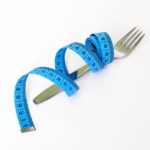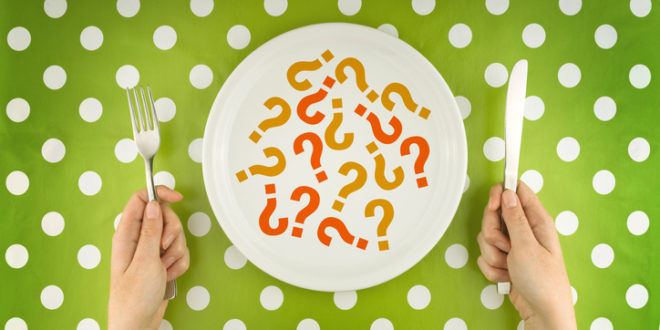by Michelle Sutton-Kerchner
Dietary weight loss trends change daily. From drinking apple cider vinegar to eating only grapefruit, there is something to challenge everyone’s palate. If you want to lose weight, focus your energies elsewhere …
The Reality
Weight loss fundamentals are based on a tried-and-true equation:
more calories burned + less calories consumed = weight loss

It’s an undeniable fact, regardless of how much we want to torture ourselves with a strict carb-free diet based on octopus juice. Attempting weight loss shouldn’t be a form of punishment. An unhealthy approach can lead to poor self-esteem and even additional weight gain—along with a (literal) bad taste in your mouth.
Extra pounds sneak on. Weight gain is a fact of life, right up there with your favorite show being canceled or the lawn in need of mowing. Not pleasant but manageable. Stop trying to punish yourself with fad diets and deprivation.
Eat Less & Move More
Studies show the type of calories you consume is less significant than how much you eat of them. That isn’t permission to live on candy bars, which would clearly impact your health if not your waistline. Rather, the focus should be on a balanced, properly portioned diet with calorie consumption modified by calories spent.
The flexibility to choose which nutritional path you want to follow is liberating. An abundance of diet plans are continuously promoted. Individuals who strive to lose weight can pick one to help conditions beyond weight loss, such as heart health. Now, dieting becomes focused on improved well-being as well as shedding pounds. If weight loss is delayed, your health still benefits, which provides inspiration to continue. (No nasty tonics or dietary restrictions needed!)
Experts agree severe restrictions and rigid ingredients are not usually the solution for sustainable weight loss. Dieters get hungry, irritable, and discouraged. Choose a healthful way of eating based on your nutritional needs.

Unless a health condition limits you, include all the food groups as well as a few indulgences. Then, decrease portions and increase exercise. Whether those portions are Paleo, Atkins, or Mediterranean inspired have less impact on weight loss than how much was consumed and how the rest of the day was spent (active or sedentary).
Consider nutritional counseling. A registered dietitian can customize a nutrition plan to meet your requirements. You may benefit from following a unique dietary combination; for example, elements to benefit a predisposition to osteoporosis, desire to lose weight, and need to lower blood sugar. If the diet is healthful, its differentiating ingredients do not necessarily impact weight loss success, according to studies. Rather, weight loss is effected by the amount of those ingredients consumed.
Hungry for More?
Cutting back on portions is not easy, especially if you are accustomed to loading your plate and having mid-morning and afternoon snacks with the calorie count equivalent of a meal.

Gradually reduce caloric intake. If you are used to having a daily donut and coffee around 10:00am, skipping it completely will leave you hungry. Our hunger cues operate on a sensitive time schedule. (Think about Daylight Saving Time when our hunger begins earlier by adjusting the clocks only one hour forward.)
Try switching to a half donut and low-fat milk at that 10:00am mark. After a few days, replace the donut with a healthier, nutrient-packed snack. Even if the calories are the same, at least you gain nutritional power. Choose nuts or other high-protein nibbles to help satisfy you until the next meal, which also should have reduced portions. (In other words, don’t approach it starving.)
Keep It Balanced
You also can attack the equation from the other end: burn more. Whether you’re exceptionally hungry or your food is notably delicious, sometimes minimized portions aren’t doable. Counteract those extra calories by sweating double. Add extra reps to your fitness program that day. Increase the intensity levels on your exercise equipment. Take an extra Group Fitness class. Pay up!

Fine-tune the synergy between diet and exercise to achieve weight loss goals and maintain a healthy weight. Choose food that is healthy and enjoyable to you. Eating should be a positive, fulfilling experience. Create a fitness program that meets your fitness goals and is fun and rewarding.
Weight loss does not have to be achieved through grueling workouts, unappetizing meals, and hunger pangs. It is about improved quality-of-life through better health and well-being.
Ultimately, if you want to lose weight, burn more calories than you consume. It’s science, not magic.
Sources
“What’s the Best Diet? Eating Less Food,” by Tiffany Sharples at time.com.
Image Credits
Measuring fork: pixabay.com/en/tape-fork-diet-health-loss-403586
 Fitness & Wellness News Your Source for Fitness News, Wellness News, Health News, and Nutrition News!
Fitness & Wellness News Your Source for Fitness News, Wellness News, Health News, and Nutrition News!




